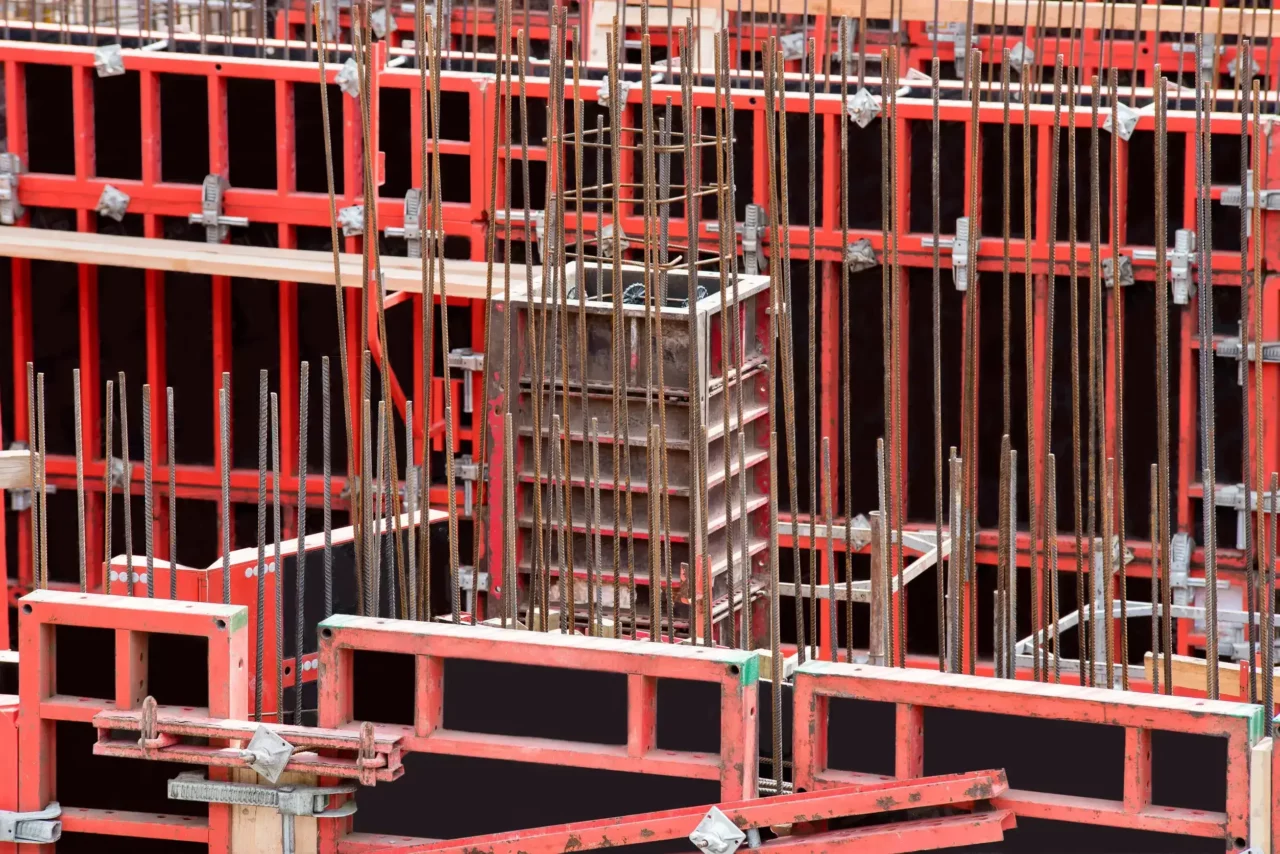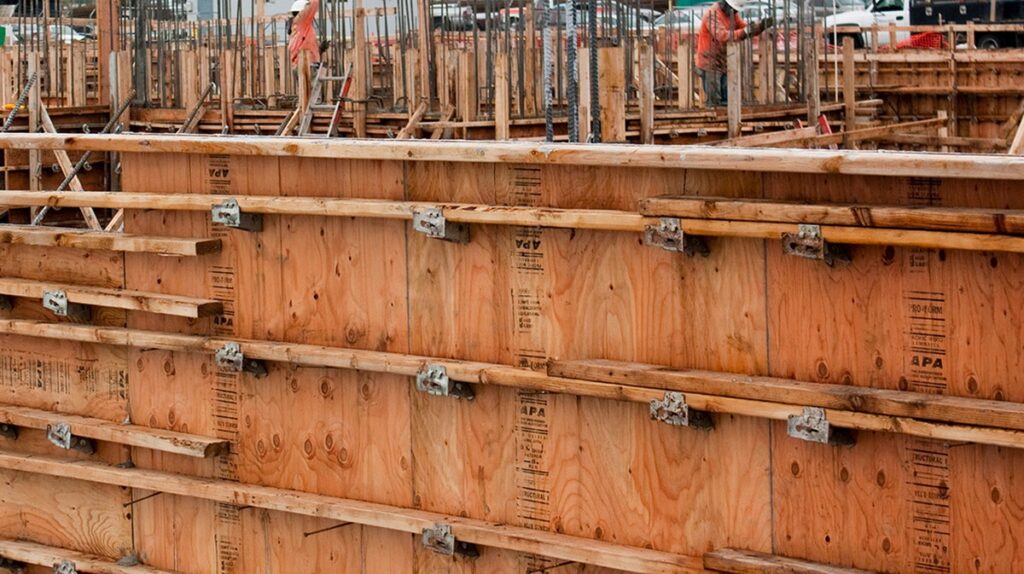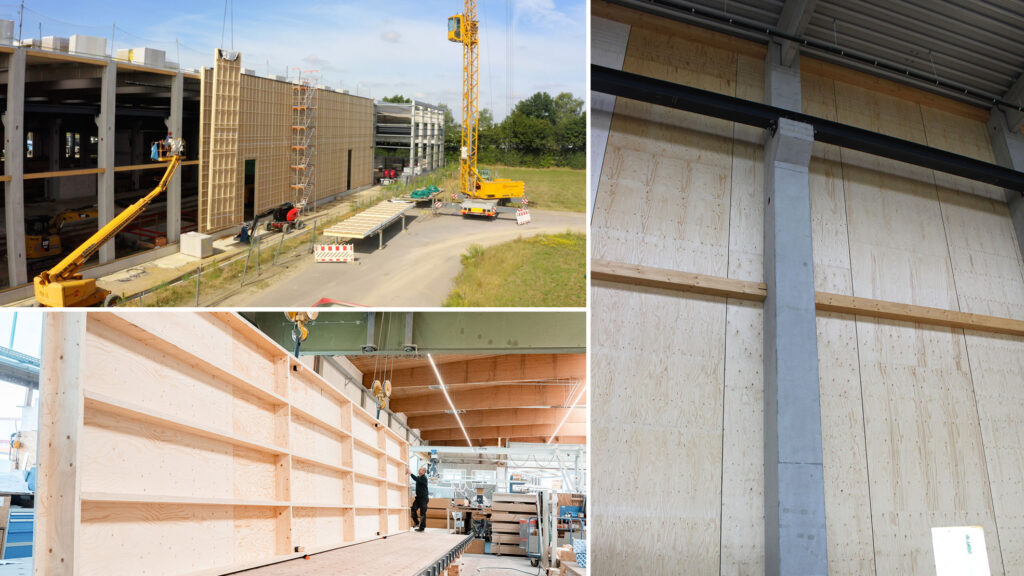LVL Formwork: A Sustainable Choice for Your Building Needs

In the world of construction, making sustainable choices has become an increasingly important aspect of project planning and execution. One such choice that architects and builders are turning to is LVL (Laminated Veneer Lumber) formwork. LVL formwork offers a range of advantages over traditional formwork methods, making it a sustainable option for meeting your building needs. Let’s delve deeper into the world of LVL formwork to understand its definition, components, and why it is gaining popularity in the construction industry.
Understanding LVL Formwork
LVL formwork, also known as engineered formwork, is a versatile and durable solution used in construction projects for creating concrete structures. It consists of laminated veneer lumber, which is made by gluing several thin layers of wood veneers together.
Engineered formwork systems like formwork LVL play a crucial role in modern construction, offering a precise and efficient method for shaping concrete structures. LVL formwork is favored for its strength, dimensional stability, and resistance to warping, making it a reliable choice for a wide range of applications.
Definition and Basics of LVL Formwork
LVL formwork can be described as a framework that holds concrete in place until it sets and gains sufficient strength to support itself. It provides the necessary support and shape for the concrete, ensuring the desired outcome of the structure.
By utilizing LVL formwork, construction projects can achieve consistent and high-quality results, as the formwork helps maintain the integrity of the concrete shape during the critical setting and curing stages. This precision is essential for ensuring the structural integrity and aesthetics of the final concrete element.
One of the fundamental aspects of LVL formwork is its load-bearing capacity. LVL beams and panels offer excellent structural strength, allowing them to withstand significant loads during the pouring and curing processes of concrete.

Components of LVL Formwork
LVL formwork systems consist of various components that work together to create a robust framework. These components include LVL beams, panels, wales, shores, and accessories like clips and couplers.
The beams and panels form the primary structure, providing the framework for holding the concrete. The wales are horizontal members that support the vertical loads, while the shores act as vertical supports to prevent any sagging or collapsing.
With a host of components available, LVL formwork can be customized to meet the unique requirements of each construction project.
Clips and couplers are essential accessories that help secure the formwork components in place, ensuring stability and alignment during the concrete placement process. These small but critical elements play a significant role in the overall performance and safety of the formwork system. Find more about concrete placement process at https://www.concrete.org/topicsinconcrete/topicdetail/Placing%20Concrete
The Sustainability Factor of LVL Formwork
When it comes to sustainability, LVL formwork has a significant advantage over traditional formwork methods. Let’s explore the eco-friendly manufacturing process of LVL and how its longevity contributes to sustainable construction practices.
Eco-Friendly Manufacturing Process
LVL formwork is manufactured using sustainably sourced wood veneers, which are typically made from fast-growing trees like pine. The veneers are bonded together using non-toxic adhesives, resulting in a strong and environmentally friendly product.
This manufacturing process minimizes the environmental impact, as it reduces the need for harvesting larger trees, while still providing a robust material for formwork construction.
Additionally, the use of fast-growing trees ensures that the forests can be replenished quickly, promoting sustainable forestry practices.
Furthermore, LVL formwork can be reused multiple times, minimizing the need for frequent replacements and reducing waste in the construction industry. This not only saves resources but also reduces the carbon footprint associated with manufacturing new formwork materials.
Longevity and Durability of LVL Formwork
Another factor that contributes to the sustainability of LVL formwork is its longevity. LVL beams and panels have a longer lifespan compared to traditional formwork materials like timber. This durability ensures that LVL formwork can be used for multiple construction projects, reducing the overall demand for new formwork materials.
Moreover, the durability of LVL formwork reduces the chances of premature failure or deformation during the concrete pouring process. This results in fewer material and time wastage, making it an efficient and sustainable choice for builders.
Furthermore, the long lifespan of LVL formwork reduces the need for frequent repairs or replacements, saving both time and money for construction projects. This not only benefits the builders but also contributes to the overall sustainability of the construction industry.
Additionally, the strength and stability of LVL formwork allow for the construction of taller and more complex structures, reducing the need for additional support systems. This not only saves resources but also minimizes the environmental impact of the construction process.
In conclusion, the eco-friendly manufacturing process and the longevity of LVL formwork make it a sustainable choice for construction projects. By using LVL formwork, builders can reduce their environmental footprint and contribute to a more sustainable future. Click here to read more about eco-friendly manufacturing process.
Benefits of Using LVL Formwork in Construction
Aside from its sustainability factor, LVL formwork offers several benefits that make it an attractive choice for construction projects. Let’s explore the cost-effectiveness, design flexibility, and environmental advantages offered by LVL formwork.
Cost-Effectiveness of LVL Formwork
While LVL formwork may have a higher upfront cost compared to traditional formwork methods, its long-term cost-effectiveness becomes evident. The reusability and durability of LVL formwork reduce the need for frequent replacements, resulting in significant savings over time.
Additionally, the reduced labor and material requirements associated with LVL formwork contribute to overall cost savings. With faster installation and dismantling, construction projects can be completed within shorter timeframes, reducing labor costs and increasing operational efficiency.
Moreover, LVL formwork’s lightweight nature reduces transportation costs, as it requires less energy and resources to transport compared to heavier alternatives. This not only saves money but also reduces the carbon footprint associated with construction projects.
Versatility and Flexibility in Design
LVL formwork provides architects and builders with greater flexibility in terms of design possibilities. Its structural strength allows for the creation of complex shapes and structures, giving a touch of uniqueness to each project.
Whether it’s curved walls, inclined slabs, or irregularly shaped structures, LVL formwork can be easily customized to meet the specific design requirements of a construction project. This versatility opens up a world of creative possibilities, enabling architects to push the boundaries of conventional design.
Furthermore, LVL formwork’s ability to withstand high loads and pressures makes it suitable for a wide range of construction applications. From residential buildings to commercial complexes, LVL formwork can handle the demands of various projects, ensuring structural integrity and safety.
Additionally, the dimensional stability of LVL formwork minimizes the risk of warping or twisting, resulting in precise and accurate construction. This not only enhances the aesthetic appeal of the final structure but also reduces the need for costly rework or modifications.
In conclusion, LVL formwork offers not only cost-effectiveness and design flexibility but also environmental advantages. Its sustainable nature, coupled with its ability to reduce waste and carbon emissions, makes it a responsible choice for construction projects. With its numerous benefits, LVL formwork continues to revolutionize the construction industry, enabling builders to create innovative and sustainable structures.
LVL Formwork Vs Traditional Formwork
When comparing LVL formwork to traditional formwork methods, several factors come into play. Let’s examine the material use, waste generation, efficiency, and time management aspects of LVL formwork.
Formwork is a crucial component in construction projects, providing the necessary support and structure for concrete to set and form desired shapes. Traditional formwork methods often rely on materials like timber that are susceptible to degradation and damage over time. This results in increased material waste and the need for frequent replacements, adding to the project’s overall cost and environmental impact.
On the other hand, LVL formwork, which stands for Laminated Veneer Lumber, offers a sustainable and cost-effective alternative. Its durability and reusability greatly reduce material waste, promoting sustainable construction practices. LVL formwork is manufactured by bonding together thin wood veneers with adhesives, creating a strong and stable material that can withstand multiple uses. Additionally, using sustainably sourced wood veneers and non-toxic adhesives further minimizes environmental impact, making LVL formwork a preferred choice for eco-conscious construction projects.

Comparing Material Use and Waste
Traditional formwork methods often rely on materials like timber that are susceptible to degradation and damage over time. This results in increased material waste and the need for frequent replacements.
On the other hand, LVL formwork’s durability and reusability greatly reduce material waste, promoting sustainable construction practices. Additionally, using sustainably sourced wood veneers and non-toxic adhesives further minimizes environmental impact.
When it comes to waste generation, LVL formwork offers a significant advantage over traditional formwork methods. Its robust construction and ability to withstand multiple uses mean that less material is discarded after each project, contributing to a more efficient and environmentally friendly construction process.
Analyzing Efficiency and Time Management
Efficiency plays a vital role in the construction industry, and LVL formwork excels in this aspect. Its prefabricated nature allows for faster installation and dismantling, reducing construction time and improving project schedules.
With LVL formwork, construction projects can progress at a faster pace, resulting in earlier project completion and reduced labor costs. This efficiency improves overall time management, ensuring that projects stay on track without compromising quality.
Furthermore, the dimensional stability of LVL formwork reduces the need for adjustments during the construction process, streamlining the workflow and minimizing potential errors. This precision and consistency contribute to smoother project execution and enhanced quality of the final structure.
Future of Building: LVL Formwork
As technology advances, so does the world of construction. LVL formwork continues to evolve, bringing forth innovative solutions for sustainable and efficient building practices. Let’s explore some of the latest developments in LVL formwork technology and its integration with green building trends. Read more about role of LVL timber in nhancing construction efficiency on https://armacosthomeinspections.com/the-role-of-lvl-timber-in-enhancing-construction-efficiency/
Innovations in LVL Formwork Technology
Advancements in LVL formwork technology have led to the introduction of new features and systems that enhance its usability. For example, self-locking systems can simplify the installation process, reducing the need for additional components or tools.
But that’s not all. Recent breakthroughs in LVL formwork technology have also focused on improving the strength and durability of the material. By incorporating advanced composite materials and engineering techniques, LVL formwork can now withstand higher loads and provide enhanced structural stability. This means that builders can confidently construct taller and more complex structures using LVL formwork, without compromising on safety or efficiency.
Moreover, the integration of digital technologies and automation in LVL formwork manufacturing and installation processes enables precise and streamlined construction practices. With the help of computer-aided design (CAD) software and robotic systems, builders can now create intricate formwork designs with utmost precision. This not only saves time and effort but also minimizes material wastage, making LVL formwork a cost-effective and sustainable choice for construction projects.
LVL Formwork in Green Building Trends
As sustainable construction practices gain momentum, LVL formwork aligns perfectly with the green building movement. Its eco-friendly manufacturing process, durability, and reusability address the key principles of environmental responsibility and resource efficiency.
But what sets LVL formwork apart from other construction materials in terms of sustainability? Well, it starts with the sourcing of raw materials. LVL, or laminated veneer lumber, is made from sustainably harvested timber, ensuring that forests are managed responsibly. Additionally, the manufacturing process of LVL formwork consumes less energy and produces fewer greenhouse gas emissions compared to traditional concrete formwork.
Furthermore, LVL formwork systems can be integrated with other sustainable building materials and technologies to create energy-efficient and environmentally responsible structures. By combining LVL formwork with features like solar panels, rainwater harvesting systems, and green roofs, builders can create buildings that not only reduce their carbon footprint but also contribute to a healthier and more sustainable future.
In conclusion, LVL formwork offers a sustainable choice for builders and architects in meeting their construction needs. Its eco-friendly manufacturing process, durability, cost-effectiveness, and versatility make it an attractive option that aligns with the principles of sustainable construction. As the construction industry continues to prioritize sustainability, LVL formwork is poised to play a crucial role in shaping the buildings of the future.

Leave a Reply